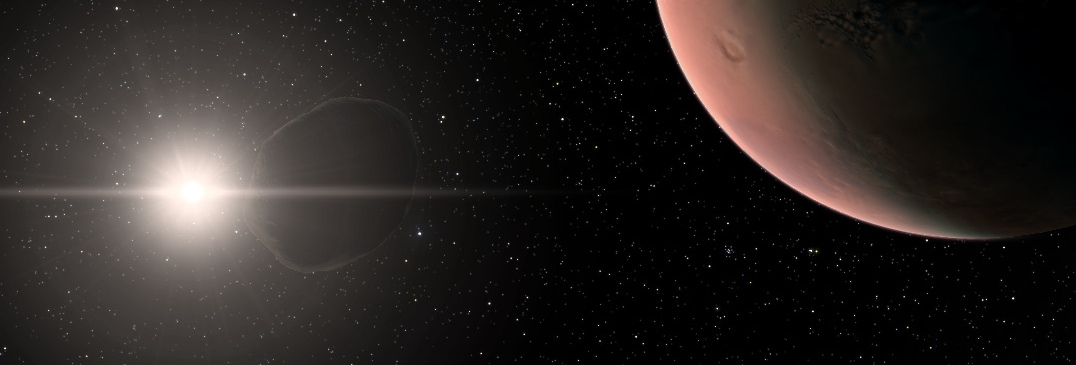Tag: Simulation
Supercharging Exoplanets
A short report on the new developments in exoplanet datasets in Gaia Sky
A couple of years ago I wrote about the procedurally generated planets in Gaia Sky. In this post, I provided a more or less detailed technical overview of the process used to procedurally generate planetary surfaces and cloud layers.
Since then, we have used the system to spice up the planets in the planetary systems for which the Gaia satellite could determine reasonable orbits (see the data here, and some Gaia Sky datasets for some of those systems here, including HD81040, Gl876, and more).
However, with the upcoming Gaia DR4, the number of candidate exoplanets is expected to increase significantly, rendering the “one dataset per system” approach unmaintainable. In this post I describe some of the improvements made with regards to exoplanets in Gaia Sky, in both the handling of large numbers of extrasolar systems seamlessly, and in the brand new, improved procedural generation of planetary surfaces and clouds.
Gaia Sky Jumbo Summer Release 1.5.0
Jumbo release 1.5.0 brings lots of new features and improvements

Gaia Sky v1.5.0
This time around we’ve had a slightly longer development cycle so Gaia Sky 1.5.0 ‘Jumbo Summer Release’ is here with a ton of new features, enhancements and bug fixes. Most importantly, we have essentially refactored the way star catalogs are handled, so that we can now stream data from disk when it is needed. Also, we’ve been working hard to make better use of the GPU and we are proud to announce that we’ve increased the performance fourfold while being able to display many more objects on screen at once.
New Release of Gaia Sky
Version 1.0.2 brings spacecraft mode, lens glow, 360° and lots of bugfixes

Gaia Sky v1.0.2
Gaia Sky is here again with a brand new release packed with new features and bug fixes. Here are the most important:
- New spacecraft camera mode – Game on!
- New lens glow effect.
- Added brightness and contrast controls.
- Improved search functionality.
- Updated textures.
- Added optional crosshair in focus mode.
- Implemented 360° mode for 360 VR videos and panormas. See gallery here.
- Brand new documentation in readthedocs.org. Edit: since then the documentation has moved to gaia.ari.uni-heidelberg.de/gaiasky/docs.
Gaia Sky in APOD
Astronomy Picture of the Day features Gaia Sky

Gaia Sky APOD
Today, 26 September 2016, the Astronomy Picture of the Day (APOD) features a video we have prepared with Gaia Sky at the ARI/Uni Heidelberg. The video itself shows a flight from outside of our Milky Way galaxy to the Sun and then a travel through the Solar System towards the vicinity of the Earth, displaying in this journey a little over 600.000 stars from the TGAS part of Gaia Data Release 1.
Gaia Videos
Gaia Sky videos
With Gaia Data Release 1 in mind, we have prepared a few videos with flights through the TGAS catalog and generally showcasing Gaia Sky.
First Version of Gaia Sky Released in Conjunction With Gaia DR1
Gaia Sky hits version 1.0.0

Gaia Sky version 1.0.0
Last September 14 the first Gaia catalog, Gaia Data Release 1, was made public. To celebrate the occasion, we also released version 1.0.0 of our virtual Universe software, Gaia Sky. This time around, the software comes with big improvements and lots of new features, the most prominent of which is the addition of the TGAS catalog, a part of Gaia DR1 which contains 3D positions for approximately 2 million objects. Check out the release trailer.